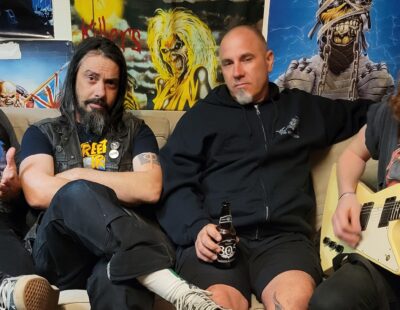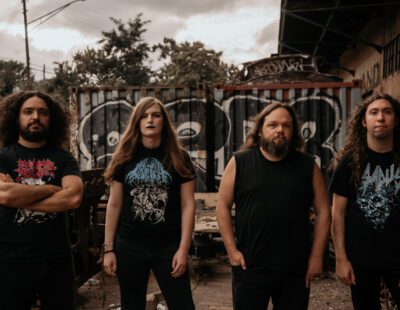Because every day another band records another song. Because 83% of those songs are unlistenable and you can’t be bothered to sift through the dreck. Because metal is about not giving a shit and waking your own personal storm. Because music is universal, expression is boundless, and even indie labels (whatever that means these days) don’t know everything, Decibel brings you Throw Me a Frickin’ Label Hack.
It’s been quite a while since we’ve thrown label hacks here on the Deciblog, so let’s get right to it. Lysura are a well-chopped black metal quartet out of Indianapolis who have been steadily (read: once a year) been releasing recordings since 2012. They have yet to settle in for their first full-length, but their most recent demo, entitled II, is making rounds right now. Older material can be accessed at their Bandcamp site.
In a recent conversation with Dane Olds from Maryland’s Dweller in the Valley, we discussed the fracturing and pollution of black metal (in all the best ways, we decided). Lysura are another example of the way that black metal can be inverted and reinvented by every band that plays that style. The guitar work draws listeners toward their labyrinth and the drums accent every moment just right.
Today we present music from Lysura’s II alongside a bit of commentary from guitarist/vocalist Max Otworth. Welcome to the darkness.
The guitar playing on II is pretty distinctive. Who are some of your guitar heroes?
This question is a bit difficult for me, as I don’t tend to obsess over specific players as much as I do the bands they are in. That being said, there are still a few stand out players and writers that have influenced me quite a bit. They are, in no particular order: Andy LaRocque, Marty Friedman, Hank Shermann, Ihsahn, Jason Becker, Tony Iommi, Dave Suzuki, Christian Münzner, and Paul Gilbert.
Your black metal is layered over mournful melodies and chord progressions. What do you mourn?
Ha! While I’m sure the four of us have our own personal inner turmoil, mourning doesn’t inspire our writing as much as (at least in my case), misanthropy, irreverence, and impermanence. I prefer to write in minor keys, and tend to use mainly neo-classical modes and scales when writing melodies. Jordan is a more bluesy player and tends to have a more expressive writing and playing style. These two elements combined is mainly what gives us our sound.
Is there a significance in the fact that the songs on II are identical in length?
While I have to strongly fight back the urge to make up something ridiculous about this, the truth is that it is just a coincidence. When we play these songs live there is usually at least a 20-30 second difference in song lengths, though somehow on this recording, they came out identical. If there is some deeper significance/explanation behind it, we are all ignorant to it.
Are your two demos whole creations in themselves, or have they just been convenient ways to document what Lysura has done so far?
Our first demo was written and recorded with our original guitarist Shaun Cothron. We had originally intended to just do that one single demo, and then a full length immediately after. However, only a few months after it was released, Shaun parted ways with the band and Jordan came aboard. We all felt that Jordan’s addition changed the sound of the band significantly enough that we needed a new demo to showcase the band with the new line-up, so we recorded II. Though we are all aware it is somewhat unconventional to release two different demos in such a short window of time, this way just seemed to make the most sense considering how things played out. However, I honestly think the songs on II complement each other and are the by far the most cohesive recording we have done as a band, and with over 17 minutes of music, it could be considered a stand-alone EP as well.
Which came first for “Seasons in Exile,” the spoken part of the intro of the guitar intro? How did that come together?
The guitar intro was the very first thing written for the song. During the recording process I was finishing up the first season of “True Detective,” which is where the sample in the beginning is taken from. -SPOILER ALERT- In the scene, the two main characters are following the show’s “villain” Errol through an underground labyrinth he calls Carcosa, made of giant stick sculptures filled with the clothes and bodies of the children he has murdered. To me, Carcosa was a physical manifestation of Errol’s insanity and perverted religious ideology that he and his ancestors been cultivating for years living in isolation. It also mentions his disgust with all those outside its walls, and humanity itself. I thought this fit perfectly with “Seasons in Exile”’s intro, and serves as a fitting preface to the songs lyrical content.






